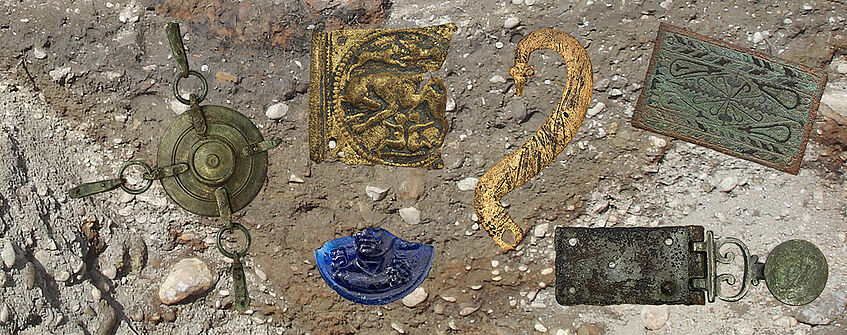Archaeological remains of early Imperial military presence from Brigantium/Bregenz

My dissertation analysed the known finds and features of a military character from the early period of the Roman settlement of Brigantium, today's Bregenz in Austria. In the course of over 150 years of excavations in Bregenz, numerous remains of Roman soldiers' equipment and also traces of military structures from the early imperial period were discovered. The archaeological legacy of a military character from Brigantium increased considerably as a result of field works in the years 2009–2012. The evaluation of the military building remains and small finds from these excavations at the so-called Böckleareal was therefore the focus of the doctoral thesis. In the course of the scientific analysis of these archaeological remains, three (construction) periods could be defined – primarily on the basis of findings from the defences – which include two probably Augustan military sites and a two-phase fort of the Tiberian to early Claudian period.
The second focus of the thesis was the presentation of all military equipment from the early Roman imperial period that have been brought to light in Bregenz to date. A total of 302 militaria and horse harness objects were presented. The antiquarian finds analysis was supplemented by comments on the dating framework and dating focus of the objects presented, by considerations on the troops that may have been stationed here and by find distribution maps within the Roman settlement area. The latter, in conjunction with building remains from earlier excavations in Bregenz, provided clues as to the size of the military installations, although much remains to be explored in this respect due to the fact that archaeological research into this settlement period has only been carried out at certain points so far.
In the final part of the doctoral thesis, an attempt was made to integrate the military installations discovered in Bregenz in the context of early imperial fortification policy in the Helvetic-Raetian region, taking into account neighbouring military sites. It became clear that there is a great deal of evidence of Roman military presence in the Augustan period from the High Rhine and the neighbouring area, while little is known archaeologically about the administration and military occupation of the area between Lake Constance and the Inn and between the edge of the Alps and the Danube in the middle and late Augustan periods (15 BC – AD 14). The oldest traces of military camps from Bregenz may help to reduce this research gap somewhat. In the Tiberian period, Brigantium was one of the most important settlements in the foothills of the Alps thanks to its location at an important traffic junction and because of the large military fort there.
Publications:
- J. Kopf, Römische Soldaten in Brigantium. Das militärische Fundmaterial und die Chronologie der Militäranlagen der frühen Kaiserzeit. vorarlberg museum Schriften 54 (Horn 2020).
- J. Kopf / K. Oberhofer, Brigantium/Bregenz. Der frühkaiserzeitliche Militärplatz und der Übergang zum raetischen Zentralort (mit Beiträgen von A. Galik, G. Grabherr, A. Langer und M. Pacher). vorarlberg museum Schriften 70 (Horn 2022) 42–289.
